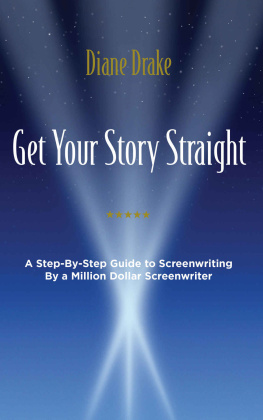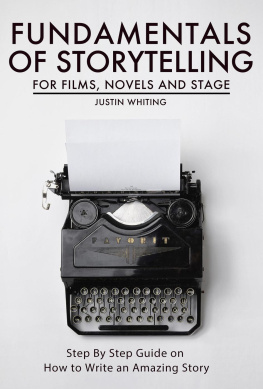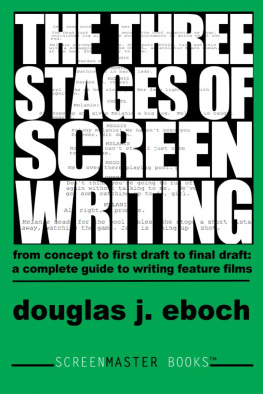Diane Drake - Get Your Story Straight: A Step-by-Step Guide to Screenwriting by a Million-Dollar Screenwriter
Here you can read online Diane Drake - Get Your Story Straight: A Step-by-Step Guide to Screenwriting by a Million-Dollar Screenwriter full text of the book (entire story) in english for free. Download pdf and epub, get meaning, cover and reviews about this ebook. year: 2016, publisher: Reel Life Publishing, genre: Romance novel. Description of the work, (preface) as well as reviews are available. Best literature library LitArk.com created for fans of good reading and offers a wide selection of genres:
Romance novel
Science fiction
Adventure
Detective
Science
History
Home and family
Prose
Art
Politics
Computer
Non-fiction
Religion
Business
Children
Humor
Choose a favorite category and find really read worthwhile books. Enjoy immersion in the world of imagination, feel the emotions of the characters or learn something new for yourself, make an fascinating discovery.
- Book:Get Your Story Straight: A Step-by-Step Guide to Screenwriting by a Million-Dollar Screenwriter
- Author:
- Publisher:Reel Life Publishing
- Genre:
- Year:2016
- Rating:3 / 5
- Favourites:Add to favourites
- Your mark:
Get Your Story Straight: A Step-by-Step Guide to Screenwriting by a Million-Dollar Screenwriter: summary, description and annotation
We offer to read an annotation, description, summary or preface (depends on what the author of the book "Get Your Story Straight: A Step-by-Step Guide to Screenwriting by a Million-Dollar Screenwriter" wrote himself). If you haven't found the necessary information about the book — write in the comments, we will try to find it.
In this step-by-step guide youll learn:
- Essential elements and principles of screenwriting with examples from popular films
- Keys to creating a hero your audience will really care about
- How to structure your story into three compelling acts
- The secret to making your scenes and story build as they progress
- Insider tips on the business of showbiz and how best to try to break in
- How to keep going when the muse is fickle, and much more
Editorial Reviews
Diane Drake has created truly brilliant and original high-concept stories for the screen. Anyone hoping to write a great screenplay would do well to consider her advice.
- Kim Krizan, screenwriter of Before Sunrise and Before Sunset
Diane Drake knows about screenwriting, and lays it out for aspiring writers in this funny, engaging book. With examples from an array of genres, terrific step-by-step exercises, and plenty of inspiring quotes to keep you focused on the story you want to write, Get Your Story Straight is the first tool I would put in any screenwriters box. This is a book Ill revisit regularly. Fabulous!
- Meg Waite Clayton, New York Times and USA Today bestselling author of five novels including The Race for Paris and The Wednesday Sisters
Want to learn what it takes to write a million-dollar screenplay? Then you must check out Get Your Story Straight by Diane Drake. Her book is a thorough insiders guide to writing a script worthy of seven figures by someone who has actually done it. I highly recommend it.
- Jen Grisanti, Story/Career Consultant, International Speaker, Writing Instructor at NBC and author of Story Line: Finding Gold in Your Life Story and Change Your Story, Change Your Life
Diane Drakes experience in script development and screenwriting is both educational and inspiring. Unlike some screenwriting books that are written by those who just teach, Get Your Story Straight gives you an inside look at how one writer used her tools and experience to write engaging and successful scripts that actually made it to the screen.
- Alan Wenkus Co-Writer/Executive Producer Straight Outta Compton
About the Author
Dianes produced original screenplays include Only You starring Robert Downey Jr. and Marisa Tomei, and What Women Want starring Mel Gibson. Her script for Only You sold for $1 million. Prior to becoming a screenwriter, Diane worked in development as the Vice President of Creative Affairs for Academy Award-winning director/producer Sydney Pollack.
Diane Drake: author's other books
Who wrote Get Your Story Straight: A Step-by-Step Guide to Screenwriting by a Million-Dollar Screenwriter? Find out the surname, the name of the author of the book and a list of all author's works by series.









